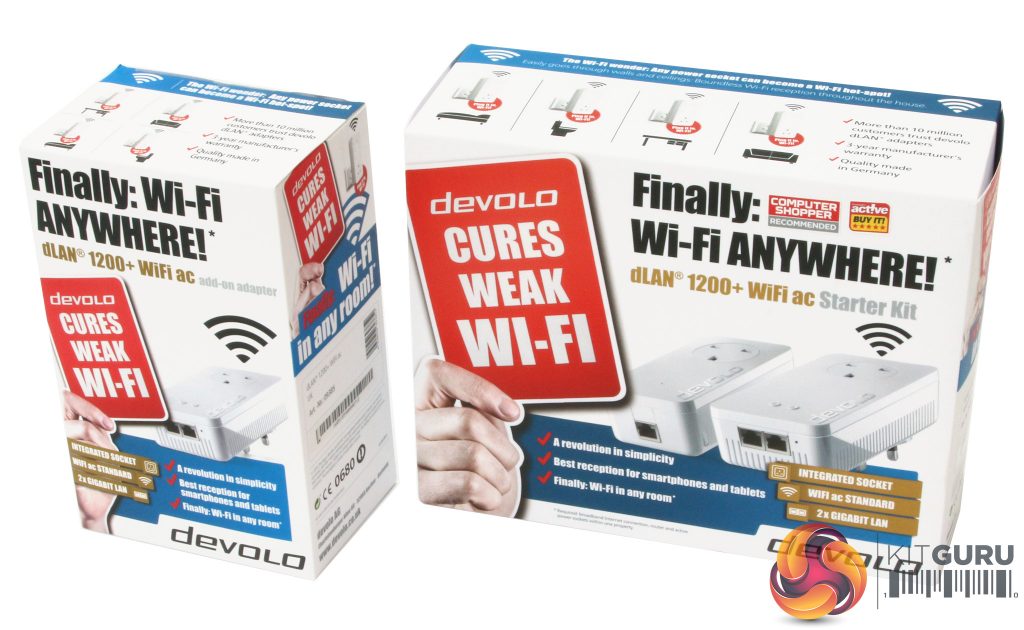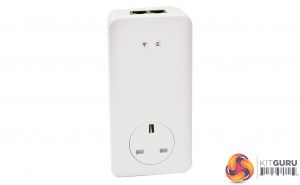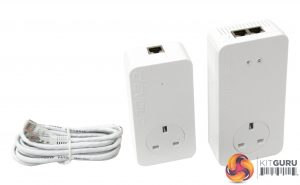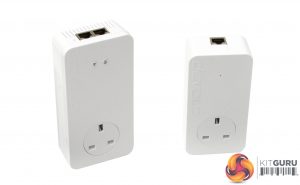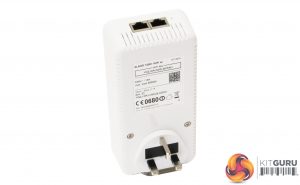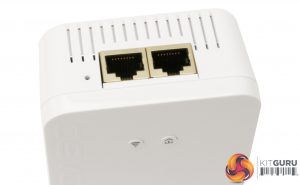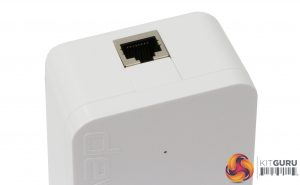You can buy a starter kit for around £140 and a single WiFi expansion unit for £90. We were sent both for our test.
In the starter kit, you get the smaller unit intended to connect to your broadband modem or router, and the larger one with built-in WiFi, plus a Cat-5 Ethernet cable. The add-on WiFi unit includes just the hardware – no cables. Since the power plug is built in, there aren't any power cables either.
The integrated power plug on the rear could be a problem if you have insufficient clearance above your mains socket, as the device is rather large. But at least it points upwards, so a floor socket is feasible. This might be quite a heavy device to hang off an American two-pin socket, but the UK three-pin socket will hold it in place securely.
There aren't that many ports on either category of device in this system. The unit intended for broadband connectivity sports just a single Gigabit Ethernet port. It's intended to connect to a switch or router with multiple ports already, if you need more wired networking connectivity in the vicinity. The WiFi unit, however, sports two Gigabit Ethernet ports, so not only does it extend your WiFi, but also provides connections for a couple of devices that don't have WiFi, or could benefit from Ethernet – such as gaming desktops or a smart TV with Internet video streaming ability.
Overall, the hardware is about as simple as could be. The HomePlug system is very consumer-oriented, so the hardware doesn't include a huge range of features. It might have been nice to have a USB port and SD card reader on one of the units, but powerline networking is generally considered supplementary to existing routers rather than a replacement, and the design reflects that.
 KitGuru KitGuru.net – Tech News | Hardware News | Hardware Reviews | IOS | Mobile | Gaming | Graphics Cards
KitGuru KitGuru.net – Tech News | Hardware News | Hardware Reviews | IOS | Mobile | Gaming | Graphics Cards


